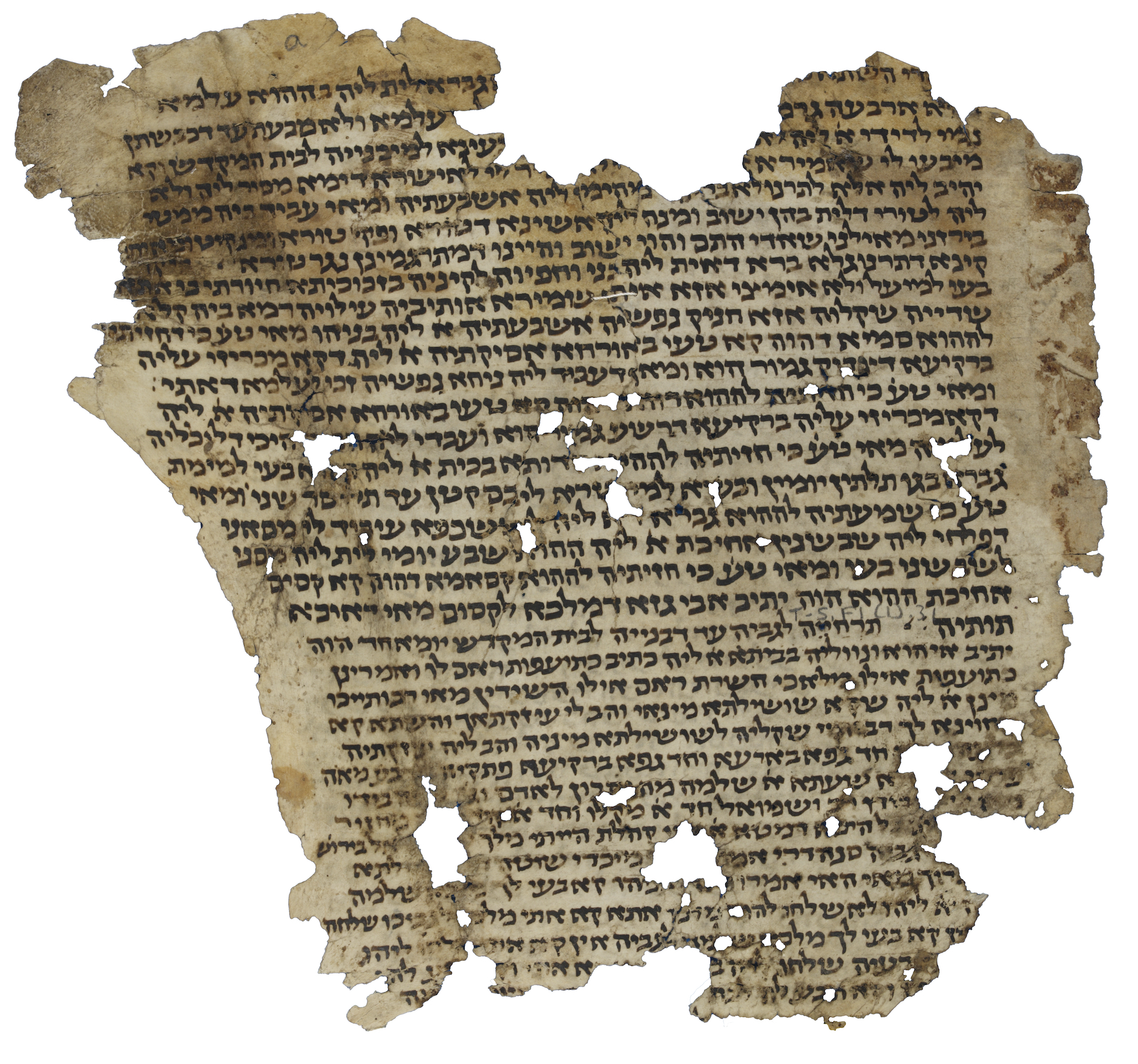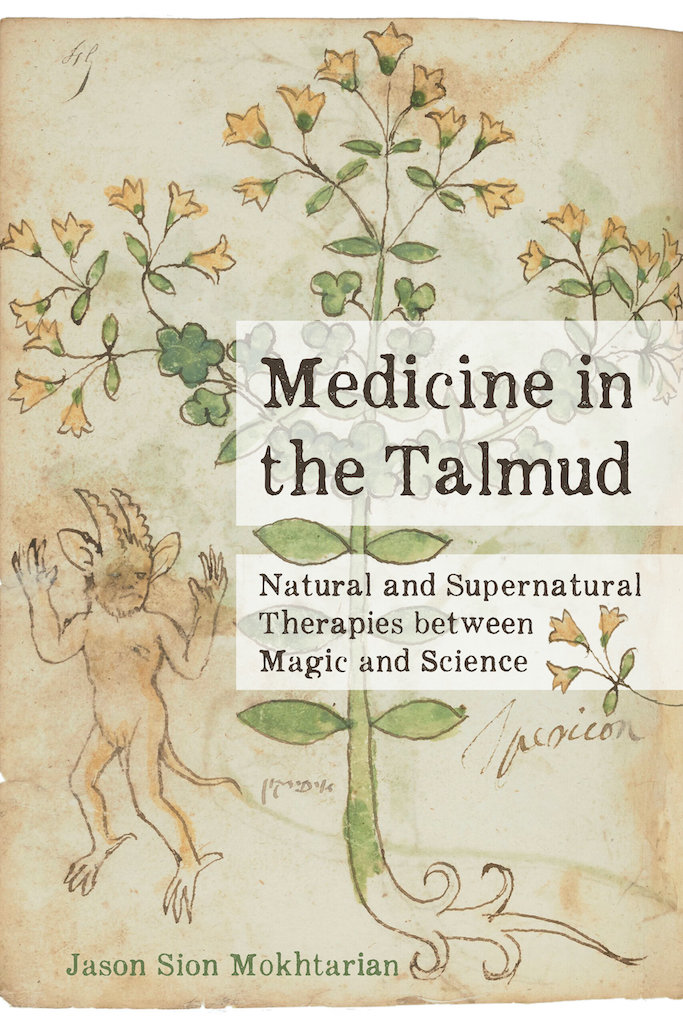Q&A Wednesday: Talmudic therapy with a Mesopotamian pedigree? The Gittin Book of Remedies with Jason Sion Mokhtarian

Jason, your new book, Medicine in the Talmud, has just been published. Can you tell us about some of the Genizah fragments you used in your research?
To the best of my knowledge, there aren’t many Genizah fragments that record Talmudic medicine, but one such fragment is T-S F1(1).31, a page of the Babylonian Talmud from tractate Gittin. Five other pages from the same Bavli manuscript are found at T-S F6.6.
It’s an oddly shaped page, with the writing adjusted to the edge of a piece of parchment. That tells us a bit about the resources of the community that produced it, if they are making use of odd pieces of parchment for nicely written editions like this. Can you tell us about the significance of this fragment?
It’s an excerpt from a medical work, the Gittin Book of Remedies. What makes this work unique is that it appears to have been an independent handbook that was edited into the Babylonian Talmud. Most interestingly, as Mark Geller has argued convincingly, it seems to come from a much earlier Mesopotamian milieu, from an Akkadian precursor.
Why was this medical handbook edited into tractate Gittin? Is a tractate dedicated to the laws of divorce a suitable place to put an ancient work of medicine?
It is difficult to know for certain, but there are a few possible reasons. Immediately before the handbook there’s the Solomon-Ashmedai tale that may somehow be related to the therapies, or at least have been a natural point of transition to them. In addition, we can look at the contemporaneous corpus of magic bowls, on which were written incantations (often for healing purposes), and in these bowls we often see the theme of the divorce deed invoked. So, there may be some connection there as well, as part of the wider cultural context in the Sasanian period.
Are other self-contained booklets found in the Talmud?
Yes, there are others. For example, there is one on the Chapters of the Pious in Ta’anit, and there’s a dream book that Philip Alexander and others have identified in Berakhot.
Can you tell us about the type of medicine found in this handbook?
It is a straight-up medical handbook, listing remedy after remedy. There are dozens of remedies for a variety of ailments, including ‘blood of the head’, migraine, cataracts, blindness, nosebleeds, pleurisy, heart palpitations, dysentery, diseased spleen, and more. Most of the therapies are quite empirical, to use a modern term. That’s not to say there aren’t superstitious elements within them, but most are potions or salves that one extracts from natural ingredients and prepares and applies to the affected area or consumes as liquid or even as foods. For example, one therapy reads: “For heart pain, bring three egg volumes of mint, an egg volume of cumin, and an egg volume of sesame and eat them.” Another reads: “For cataracts one should bring a scorpion spotted with seven colours and dry it out and grind it and make a powder consisting of two parts coal and one part ground scorpion, then apply three doses to each eye” – and there is a warning to be careful lest you make the eye burst.
Are all of the remedies physical in nature or are there elements such as saying a prayer or an incantation?
Many remedies that I am interested in in this book are on the so-called empirical side, but others will of course include a religious or magical element, whether that is the use of an amulet or a prayer or incantation, and some therapies will incorporate both superstition and more empirical techniques. Of course, one can question whether the rabbis themselves made that kind of distinction between so-called magical or empirical approaches. There’s mixed evidence as to what extent that distinction was understood by the rabbis, but for the most part it does not appear to have been.
Are there other medical passages in the Talmud?
There are a lot of other medical remedies found in the Talmud, for example in Avodah Zarah and Shabbat. These sometimes start with some sort of legal question that sends the rabbis down a path of discussing medicine and recording therapies.
Your main period of expertise is the time that this material was incorporated into the Talmud, but can you tell us anything about its later reception, for example in the Genizah world?
I find the question of reception to be one of the more fascinating aspects of Talmudic medicine. Soon after the Talmud was redacted, the therapies in it became passé and few people apparently did them anymore. Some Jews certainly do continue the Talmudic legacy and are more conservative in their medical approaches, but, to the best I can discern, most turn to the medical sciences of their own time, which was based on the important role of Greek science within Islam. For example, Maimonides and other medieval Jews adopted Greek medicine as the basis of their understanding for how to heal the body. In short, these Talmudic therapies become viewed as ineffective soon after the completion of the Talmud. It’s interesting to me because it causes a tension: that is to say, how is one supposed to make sense of the fact that within the Talmud, the most important work of Jewish canonical law and basis of normative behavior is embedded these medical rituals that no one believes in anymore and that no one wants to do? Since this is a blog post, I would add that I once read a blog post from an orthodox yeshiva student who reported that the two best students in the class were debating, when they got to a passage with therapies, whether they should just skip over it or not. They were in agreement that the therapy had no didactic value to their studies. One student said let’s skip it, whereas the other argued let’s read it even if it has no meaning to us. This reflects that sort of tension.
Are there any connections between Talmudic medicine and the medicine in the Hebrew Bible?
Talmudic medicine is, I believe, quite a significant rupture from the traditions that came before it. The Torah – and the Bible more broadly – do talk about disease and there are a variety of passages that talk about, for instance, skin diseases. But there aren’t elaborate remedies in the Bible, at least not in the way that we see them in the Talmud. Remedies appear in the Bavli (and some are also found in the Talmud Yerushalmi), but they are not an obvious development from the kind of medical information found in the Bible.
Thanks for your time, Jason!
Jason Sion Mokhtarian is the Herbert and Stephanie Neuman Associate Professor in Hebrew and Jewish Literature at Cornell University, where he is the Director of the Jewish Studies Program. He is the author of Rabbis, Sorcerers, Kings, and Priests: The Culture of the Talmud in Ancient Iran (University of California Press, 2015), and Medicine in the Talmud: Natural and Supernatural Therapies between Magic and Science (University of California Press, 2022).

Medicine in the Talmud: Natural and Supernatural Therapies between Magic and Science, by Jason Sion Mokhtarian (University of California Press, 2022).

Add new comment